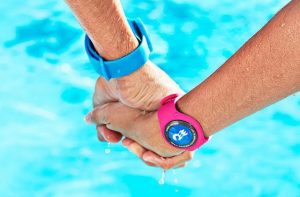High Tech on the High Seas
In cruising, tech is no longer just a nice optional extra, it is something that travellers expect as standard. Cruise companies understand this and are increasingly incorporating high tech aimed at improving the cruise experience. In the process, they are also using tech to help target specific segments of the cruising market.
Wearables and apps
While remote check-in and on-board apps are now standard, Carnival’s Ocean Medallion, available on all Princess MedallionClass ships, takes this https://www.royalcaribbean.comone step further. The medallion is a free, wearable disc that works with the OceanReady app to personalize and manage your cruise experience. Loaded with passenger’s digital data, the medallion and app eases and speeds embarkation, acts as a room key, and can be used for payment. Order drinks from your device and they can be delivered anywhere on board – the medallion tells crew members exactly where to find you.
Wearables are also used on Royal Caribbean cruises, where WOWbands use radio frequency technology to open your cabin door. On MSC Cruises, an interactive wristband works with an app to provide 130 smart features, including a digital way-finder and a reservation service. The MSC Meraviglia also has interactive screens placed around the ship that allow you to book dinner and activities with a swipe of the wristband. The brand-new MSC Bellissima takes this one step further, with a voice-enabled artificial intelligence device called ZOE that can answer questions in seven languages.
Norwegian Epic uses facial recognition software to allow guests to access any photos that are taken on board. Guests can view and order their photos with a swipe of their cruise card at an on-board kiosk. Norwegian Cruise Lines also uses an app, called iConcierge, to allow guests to make reservations or plan their day on board.

Tech for families
Innovations like wearables and apps are also helping cruise lines target families, by pointing out that the wearable can help to keep track of their children while on board. MSC Cruise’s wearable bracelets and Carnival’s Ocean Medallion both interact with on-board sensors to allow parents to instantly locate their child in any of the ship’s public areas.
Cruise lines are also turning to tech to keep the entire family entertained. Norwegian Cruise Line’s Breakaway Plus-class ship, Norwegian Encore, which launches in 2019, will feature a digitally-enhanced laser tag arena and interactive gaming with virtual reality (along with the world’s largest ocean-going racetrack). The MSC Meraviglia has added a 3D printer to their children’s arts and crafts options, and an interactive multimedia table that allows children to send messages and share music, as an option to staring at individual smartphones.
Attracting the digitally-native
Virgin has taken a different approach with its new Virgin Voyages cruise line, launching in 2020. The Virgin offering is geared towards Millennials. There are around 83 million Millennials in the U.S., and they spend around $1.4 trillion each year. For this age, experience is everything, and Virgin’s ships are designed to supply this, with wellness offerings and a child-free atmosphere. Millennials have also grown up as digitally native, and so expect a high level of tech as standard. On the Virgin ships this includes free WiFi and smart cabins, with sensors that automatically adjust the lighting, blinds and air conditioning depending on who is in the room and the time of day. The system can also detect when the room is empty and change to eco-saver mode, conserving energy to support the cruise line’s commitment to being one of the cleanest fleets at sea.

High expectations from Chinese passengers
Within the next 10 to 20 years, the number of Chinese who take cruise trips annually is expected to surpass that of the United States, and Chinese customers increasingly expect high-tech as standard. Lines are already adapting to meet this demand. Carnival’s Costa brand has launched WeChat apps especially for the Chinese market. The apps enable smart boarding and a host of on-board features.
Royal Caribbean Cruises is also targeting the digitally-native Asian market with its Quantum Class fleet that incorporate high tech experiences like a Bionic Bar, where drinks are mixed by giant robot arms, and computer-generated sound and light shows. Missed booking a room with a view? That’s no problem on the Quantum ships, which feature virtual balconies – a real-time broadcast of the outside view onto an 80-inch high-definition screen. The virtual balcony gives every room an ocean view. Also standard is a voice-activated, in-room virtual assistant, holographic staff and Voom, an ultra-fast WiFi.
From virtual personal assistants to interactive wearables and smart cabins, integrated tech is becoming a standard part of the cruising experience.
Tell us your experience on Cruising Journal, dont’ forget to make Reviews of cruiseships you have been on!
